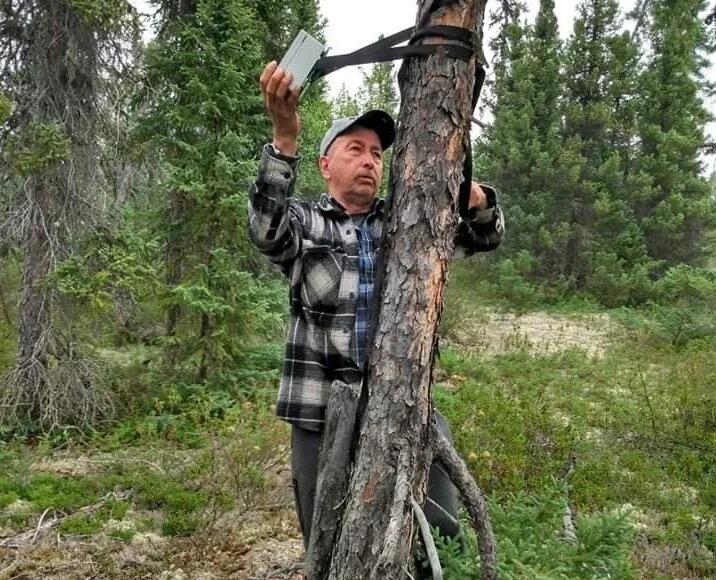Indigenous Peoples have been in relationship with the plants and animals of the Boreal Forest in Canada for thousands of years – since before time was recorded, as is often said. These relationships are at the center of Indigenous stewardship and the reason the boreal remains the largest intact forest left on the planet.
Read MoreAudubon and the Seal River Watershed Alliance, an Indigenous non-profit coalition, have worked together to record the sounds of a critical bird breeding area.
Read MoreDr. David Schindler was a giant among the academic scientific community. He was a fearless communicator of truth to power, speaking honestly and passionately about what science was telling us about the state of the environment and what needed to be done to ensure a healthier and more equitable world.
Read MoreBoldly yet delicately colored in swaths of yellow, salmon, frost white, or raspberry, the beauty of winter finches is a welcomed sight to what is often a pallid landscape across the northern tier of the United States. We are transfixed by their annual movements, particularly their incredible irruptions outside of their expected ranges, in search of food. There is no question about it, winter finches are both beautiful and wild. It is their very essence.
Read MoreAcross much of the U.S. and Canada birders are participating in getting a late winter snapshot of the status of birds. Started more than twenty years ago by Audubon and the Cornell Lab of Ornithology and joined by Birds Canada in 2009, the Great Backyard Bird Count invites bird enthusiasts of all kinds to count birds anywhere from February 12-15.
Read MoreAmid the challenges presented by COVID-19, several bright spots emerged. Across the Boreal Forest, Indigenous Nations and their allies made sweeping gains in sustaining the lands, waters and natural systems we all depend on.
Read MoreConserving intact forests not only pulls carbon from the air, it also sustains habitat for birds and other wildlife we love. Many Indigenous Nations are leading the way with nature-based climate solutions by conserving large healthy lands rich in bird nesting grounds.
Read MoreLeadership that makes bold commitments to deal with the loss of birds and other biodiversity at the scale needed—like that shown by Canada and other countries and by Indigenous governments—is vital if we are to ensure a healthy and livable planet thriving with birds, wildlife, plants and people.
Read MoreThe report shows that the Seal River Watershed is a critically important breeding and migratory stop-over for huge numbers of waterfowl including lots of the species that people in the U.S. love to see in migration and winter.
Read More“Most Canadians agree Indigenous-led conservation is good for the economy. They see it as an important path forward. The pandemic has caused painful disruption, but it is also an opportunity to make positive change. And many businesses are committed to making change by supporting Indigenous leadership on the land,” said JP Gladu.
Read MoreThe authors show that the most important areas for conservation of biodiversity have major overlap with the most important areas for climate stabilization. This includes the massive carbon banks of the Boreal Forest biome of Canada and Alaska. And there is more good news—many of these globally important places for biodiversity and climate are being conserved by Indigenous governments.
Read MoreThe most striking feature we identified is that the boreal—a continent-wide landscape—is over 80 percent intact. That means it is one of the last opportunities to protect as much habitat as science tells us we need to protect in order to maintain the birds and other wildlife and plants and the ability of the forest to clean the air and water.
Read MoreThe return of birds each summer to their breeding grounds in the boreal is one of the most visible and universally celebrated of those cycles here in the Northern Hemisphere. Right now, billions of birds are raising their young in North America’s Boreal Forest. Their cycle of regeneration inspires hope.
Read MoreAs so many of us find ourselves staying at or near home for an extended period, perhaps you can find comfort in watching for or learning about the birds migrating through this spring.
Read More
Billions of these birds are headed to Canada’s Boreal Forest. Sustaining boreal nesting grounds ensures these waves of birds will continue washing over the hemisphere for generations to come.
Read MoreIn the era of climate change, increased pressure for development and mounting extinctions of animal and plant species, we need people on the ground caring for the boreal. In many regions of the forest, this vital work is being done by Indigenous Guardians.
Read More















